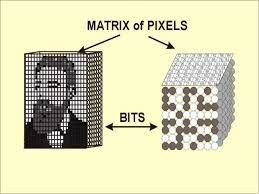
Matrix Applications in Image Processing
Matrix operations play a crucial role in the field of image processing, enabling various transformations and enhancements that are fundamental to modern visual technology. From resizing images to applying filters and performing color adjustments, matrices provide the underlying framework for these operations.
One common application of matrices in image processing is image transformation. Affine transformations such as scaling, rotation, translation, and shearing are all achieved using matrix multiplication. By manipulating transformation matrices, images can be resized, rotated to any angle, or repositioned with ease.
Another significant area is filtering. Matrices, known as convolution kernels, are used to apply filters that enhance or modify an image's characteristics. These filters can perform tasks like blurring, sharpening, edge detection, and noise reduction. Each element of the kernel corresponds to a specific weight, and convolution with the image pixel values produces the filtered result.
Color adjustments also rely on matrices. Changing color spaces, such as converting an image from RGB to grayscale or adjusting hue and saturation, involves matrix operations that transform color representations.
In summary, the application of matrices in image processing is indispensable. They empower the manipulation of images through transformations, filtering, and color adjustments, forming the foundation of various visual enhancements we encounter daily, from social media filters to medical image analysis. Understanding matrix operations is essential for professionals and enthusiasts engaged in the dynamic field of image processing.